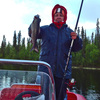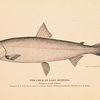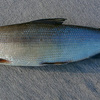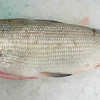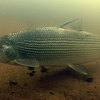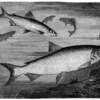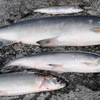Whitefish trolling and line
In most cases the whitefish is sought after in the open water bodies with spinning and for real catch with winter lures.
The fishing techniques for whitefish angling are very different, when fishing in the river or the lake. For example in the lakes the whitefish is better found in the shallows, where it comes to feed. In open waters the bait is thrown with the spinning, along the shore line, instead of across it, from the boat. For bait the fishermen normally use blinkers in light colours or small red spinners. Considering the size of the fish’s mouth the lures should be of a small size (№ 2, 3). One of the successful tricks is to attach, above the spinner, one or two short stretches of line either with hooks, dressed with red thread or with artificial flies, which imitate the nymphs.
In the rivers the whitefish is often found in areas where the river suddenly widens, starting from the jet to the very shore. In calm weather, hiding away under the shadow of bushes or trees, you can find flocks of preying whitefish. At this time the smaller fish remain close to the shore, whereas the bigger ones prefer to stay in deeper waters, where the jet dies out. It is understandable that you can achieve better results if you mask well, however, it is considered that whitefish is not easily scared away. Anyway, it is better to avoid wearing very bright clothing and better to avoid violent movements of the rod.
When fishing for whitefish with line, in the river or at the lake, it is best to use spoon bait with a sandwich of worms and gad-fly and even in open waters. Most commonly the whitefish is best angled out of a boat. You can use gammarus or small prawn on your spoon bait. It has been noted that such a bait is far better than ent-midge. The special thing about such fishing is that the spoon bait is strongly jerked, from time to time stopping it and then again returning to trembling.
The whitefish is also active during winter. When fishing under ice, you use practically the same tackle as the one you use in open waters.
